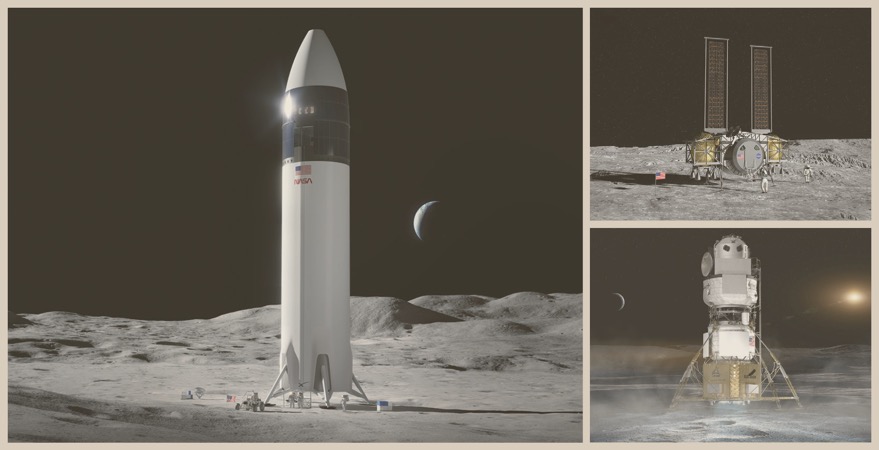It’s certainly been an eventful few weeks for America’s space program with the recent return of astronauts from the International Space Station and confirmation of NASA Administrator Bill Nelson. However, readers of this publication know that there’s controversy swirling around NASA these days after the agency awarded the Artemis Human Landing Systems contract to a single contractor, SpaceX, instead of NASA’s typical standard of awarding to multiple contractors. Proponents of the move have argued that by breaking with precedent and simply awarding the contract to SpaceX, NASA is proving that it is “serious about returning to the moon” and that official concerns are overblown. Frankly, I couldn’t disagree more.
The award to a single provider was in contravention to the agency’s long-stated strategy for the Artemis program: to work with multiple companies so NASA avoid the costly delays and suspensions that have plagued the ambitious programs of the agency’s past. In bucking the process that has shown so much promise, NASA has elevated the risk its most important program, which is tasked with returning astronauts back to the moon, will face, all while making its already ambitious deadlines that much less probable to hit.
If America is to land on the moon by 2024, it will almost certainly need multiple contracts.
NASA gives out multiple contracts because the development of space vehicles is challenging. It’s expensive to make a safe rocket, and despite the best efforts of our most brilliant scientists and engineers, even they can’t guarantee the avoidance of failure for any particular design.
To avoid these issues when pursuing a trip to the moon and Mars, Congress got a great idea to open development to the private sector in the hopes of getting more reliable hardware at lower costs. But to meet the deadlines set by NASA, the agency began selecting multiple proposals (only the viable ones) to increase the chances that a workable vehicle will be available on time and at an affordable rate. To deviate from this procurement model under any circumstance makes the chances of a successful mission far less likely.
This isn’t really up for debate, as even Trump ‘s NASA administrator, Jim Bridenstine, and new NASA Administrator Bill Nelson agree that competition in the procurement process is paramount to mission success. And so no, awarding this single contract does not get us closer to the moon. It heightens the chances of failure.
SpaceX CEO Elon Musk and his supporters argue that those complaining about the contract are labeled as obstacles to progress toward a lunar landing. But surely Musk, of all people, can understand the detractors. He is no stranger to protesting contract awards that have not gone his way. SpaceX began protesting government launch contracts in 2014. His most recent suit against a Department of Defense procurement for the development of launchers uses many of the same arguments now being advanced by other suppliers.
And it’s no surprise they’d protest Starship.
When the Air Force evaluated SpaceX’s Starship in 2019, it concluded it was “too risky” for the intended mission. Now NASA is saying that it is the least-risky option available. This is despite the number of very public failures of the Starship design in recent months. Even its “successful” test flight on May 5 ended with a vehicle that was on fire when it landed.
All of this is to say that with something as complicated as rocket testing, no prototype is a “sure thing.” You need to give yourself options, or things could easily hit a wall and grind to a halt.
Don’t get me wrong: I hope that SpaceX can correct the issues on its vehicle. But I also believe that other suppliers are well on the way to developing the capability for fulfilling the Artemis lander mission and should be given the equal opportunity to bring its lander to fruition.
Of course, the underlying problem for NASA’s sole-source decision on Artemis is yet another unfunded government mandate. The previous and current administrations both support a return to the moon, but Congress has failed to provide the funding necessary to make it a reality. Even if the previous administration remained in office for another term, there was little chance of meeting its 2024 target for a human-crewed landing. However, it is possible to maintain the sense of urgency required to move the program forward while at the same time making the technology and program sustainable, not just a one-shot publicity stunt.
America’s best shot at a permanent presence on the moon is to fund a program that enables multiple providers to explore and develop the technologies to achieve this critical national security mission.
Jonathan H. Ward is a freelance writer on space exploration and is the co-author of “Bringing Columbia Home: The Untold Story of a Lost Space Shuttle and Her Crew.”
